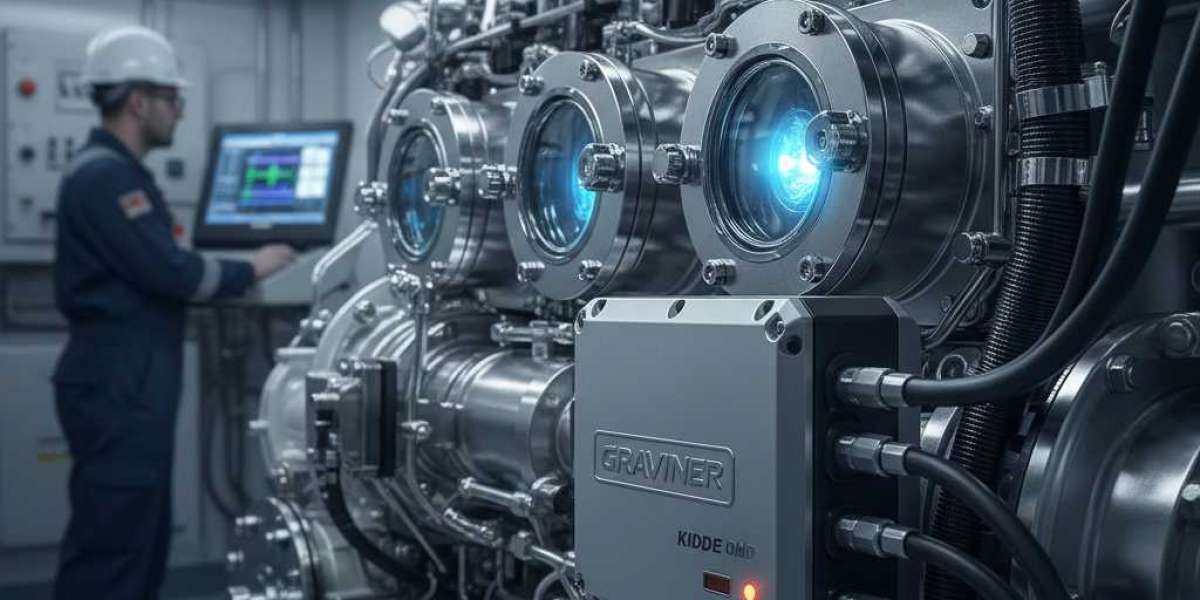In today’s maritime industry, where efficiency, safety, and environmental compliance define success, reliable engine monitoring has become a non-negotiable necessity. Among the advanced technologies ensuring these standards is the Graviner/Kidde OMD (Oil Mist Detector) system — a critical safeguard that plays a vital role in the safety and performance of marine engines. This advanced detection system has become a trusted choice for shipowners and engineers worldwide, providing early warning against oil mist buildup and preventing catastrophic engine failures.
The Graviner/Kidde OMD is specifically designed to detect oil mist inside engine crankcases, one of the earliest indicators of potential engine problems such as bearing failures, overheating, or lubrication issues. By offering continuous and precise monitoring, the system helps crews prevent accidents, reduce maintenance costs, and comply with international maritime safety regulations.
One of the main reasons modern ships rely on the Graviner/Kidde OMD is its advanced technology and precision. The system operates using an optical detection method that continuously samples air from various points in the engine crankcase. A light beam passes through the sample, and if oil mist particles are present, the light is scattered. The detector then measures this scattering to determine the concentration of oil mist. When the level exceeds safe limits, the system automatically triggers alarms or engine slowdowns to prevent damage or explosions. This early detection capability is crucial, as oil mist can ignite under high temperatures, causing dangerous crankcase explosions that can endanger the entire vessel.
Reliability is another factor that makes the Graviner/Kidde OMD indispensable in modern marine engineering. Designed to operate under the harsh conditions of marine environments, it maintains accuracy even under high vibration, humidity, and temperature variations. Its robust construction and proven track record make it suitable for long-term operation without frequent maintenance. Many shipowners consider it a “fit and forget” solution, knowing it will continue monitoring engine conditions tirelessly, day and night.
Modern ships also rely on the Graviner/Kidde OMD for its contribution to compliance and safety standards. The International Maritime Organization (IMO) and SOLAS (Safety of Life at Sea) regulations mandate the use of oil mist detectors in large diesel engines to prevent explosions caused by oil vapor. The Graviner/Kidde system meets all relevant IMO and SOLAS requirements, including the standards outlined in IMO MSC.1/Circ.1390. This compliance ensures shipowners can operate with confidence, knowing their vessels meet global safety and inspection criteria.
Another major advantage of the Graviner/Kidde OMD is its real-time monitoring and data recording capabilities. The system continuously records critical information, such as mist concentration levels, alarm events, and sampling results. This data can be used during safety audits, port inspections, and preventive maintenance planning. Engineers can review the data to identify patterns, detect developing issues, and address them before they lead to costly engine failures. This predictive approach not only enhances operational safety but also minimizes downtime and maintenance expenses.
Integration with modern ship management systems is another reason for its popularity. The Graviner/Kidde OMD can be easily connected to a ship’s main automation or monitoring systems, allowing engineers to view oil mist data alongside other key engine performance indicators. This integration simplifies operation and ensures the entire engine monitoring system works seamlessly as one unit.
In addition to enhancing safety and compliance, the Graviner/Kidde OMD also supports sustainable shipping operations. By preventing engine failures and oil mist-related fires, it helps minimize oil leaks and environmental pollution. With the global maritime industry moving toward greener operations, having reliable monitoring equipment like the Graviner/Kidde OMD aligns with environmental protection goals and corporate sustainability initiatives.
The Graviner/Kidde OMD also stands out for its user-friendly operation. Its modular design allows easy installation on both new and existing vessels. The interface is intuitive, providing clear readings and alerts that can be quickly understood by the crew. In the event of an alarm, the system provides precise information about which crankcase area is affected, allowing engineers to take targeted corrective actions without delay.
Maintenance is simple and efficient, with built-in self-diagnostic features that notify users of any sensor or system faults. This self-checking functionality ensures the system remains operational at all times, reducing the risk of undetected faults. Its long service life and minimal maintenance requirements make it a cost-effective investment for shipowners seeking reliable and continuous protection for their engines.
Trusted marine service providers like RMS Marine Service supply, install, and maintain the Graviner/Kidde OMD system for vessels across the world. Their expertise ensures that shipowners receive genuine, certified products and professional support throughout the system’s lifecycle. RMS Marine Service helps ship operators maintain full compliance, reduce risks, and ensure uninterrupted engine safety.
In conclusion, the Graviner/Kidde OMD is more than just a monitoring device — it’s a cornerstone of modern marine safety. Its ability to detect oil mist at an early stage, provide accurate real-time data, and ensure regulatory compliance makes it an essential component of every modern vessel’s safety infrastructure. Shipowners who invest in this system not only protect their crew and assets but also demonstrate a commitment to responsible, sustainable, and efficient marine operations.
As the maritime industry continues to evolve, reliability and safety will remain top priorities — and the Graviner/Kidde OMD will continue to serve as a trusted partner in achieving those goals, ensuring that every voyage is both safe and compliant.














